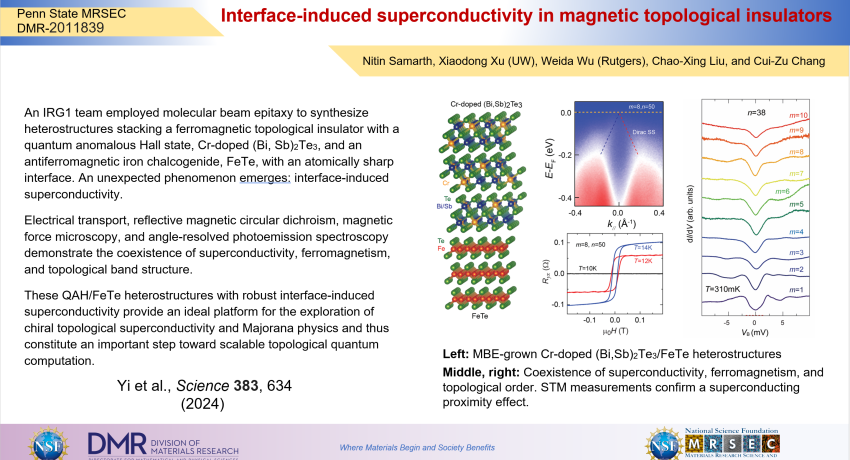What Has Been Achieved: Discovery of interface-induced superconductivity formed by stacking together a ferromagnetic topological insulator and an antiferromagnetic iron chalcogenide.
Importance of the Achievement: The Cr-doped (Bi,Sb)2Te3/FeTe heterostructures with robust superconductivity and atomically sharp interfaces provide an ideal wafer-scale platform for the exploration of chiral topological superconductivity and Majorana physics, constituting an important step toward scalable topological quantum computation.
How is the achievement related to the IRG, and how does it help it achieve its goals? The research team benefits from close collaboration within the IRG. The experimentalists have investigated a hybridized structure consisting of two non-superconducting magnetic materials. The heterostructure displays co-occurrence of superconductivity, ferromagnetism, and topological order in the magnetic topological insulators. Theory shows that this combination of properties makes the heterostructure a promising platform for observing chiral topological superconductivity.
Where the findings are published: Yi et al., Science 383, 634 (2024)


